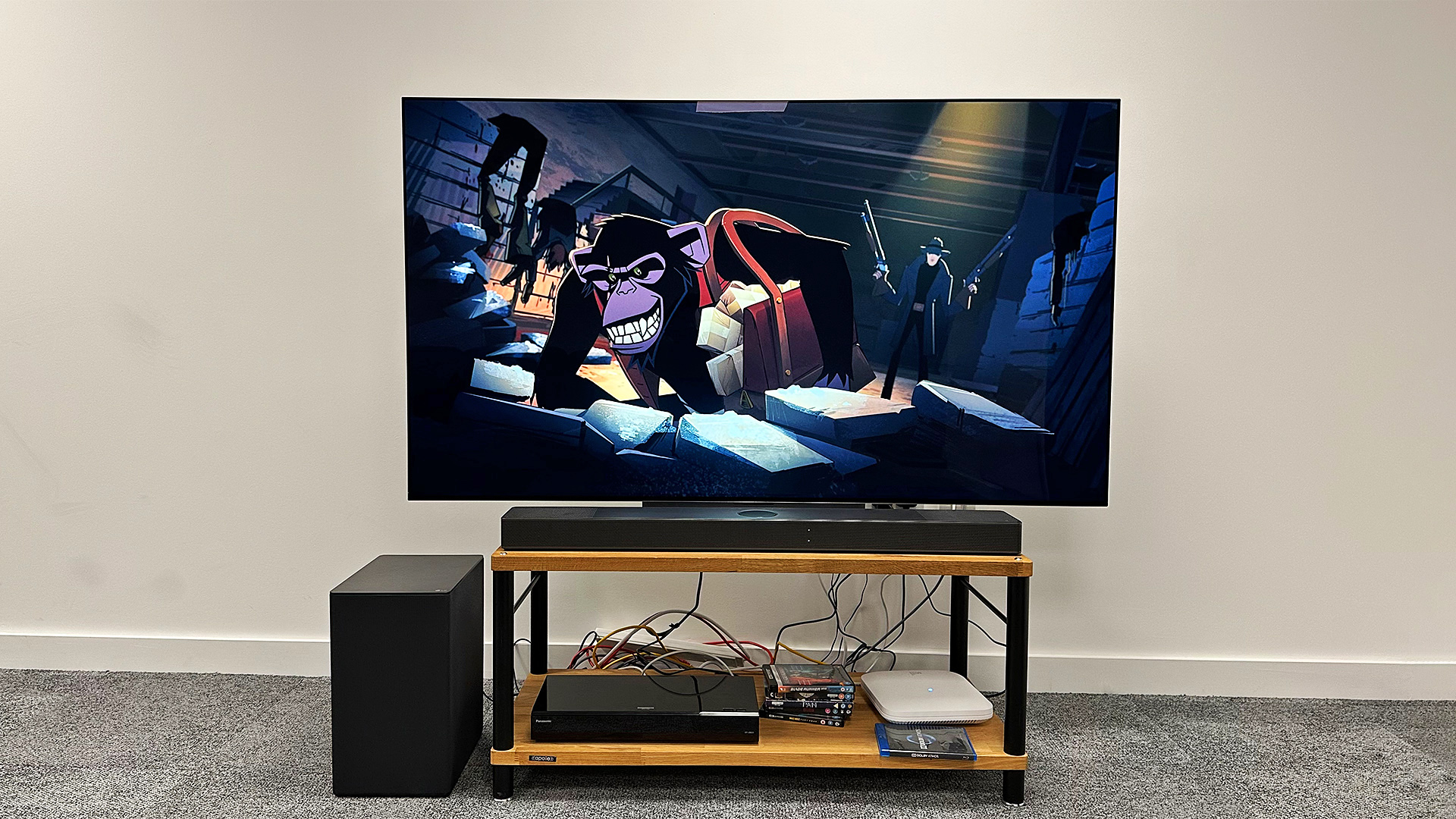
In the current era of consumer tech, the name ‘LG’ is synonymous with OLED TVs. The company is the progenitor of the current OLED TV craze and its models are the most popular by quite a margin.
LG would very much like to take advantage of that popularity by encouraging more buyers of its TVs to also purchase one of its soundbars, and to that end it’s produced this SC9S model, which is designed to partner the C2 and C3 OLEDs aesthetically, sonically and operationally.
That isn’t to say that owners of other TVs should stop reading: there’s also synergy between the SC9S and LG TVs that aren’t C-series models and it’s just as compatible as any other soundbar with the TVs of other brands. There’s just one problem – it doesn’t sound very good.
Price
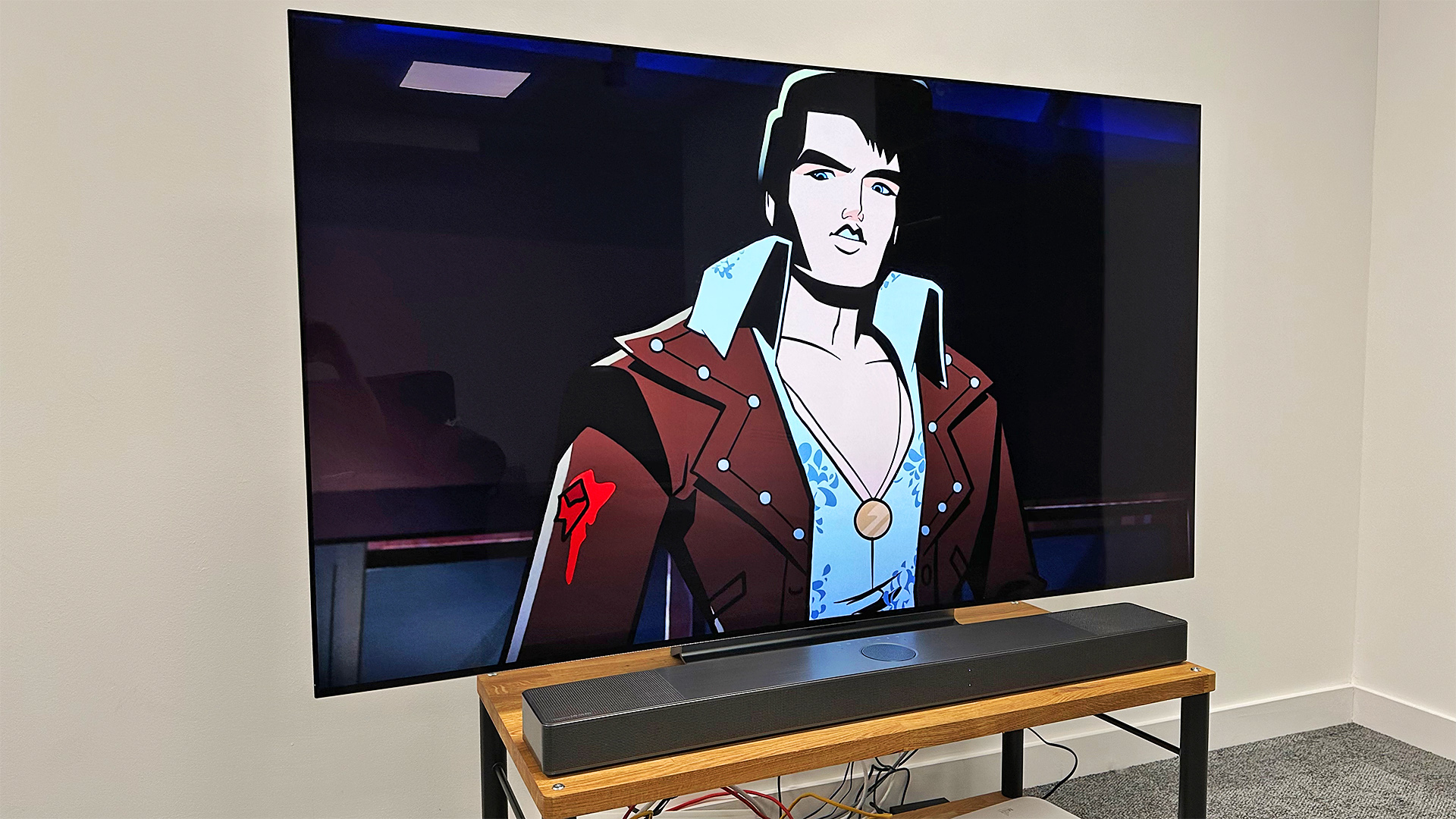
The SC9S has launched at a price of $1000, which includes the bar itself, a bracket/stand for attachment to the C2 or C3 TV, and a wireless subwoofer. If you would like to add true surround sound to the system, it’s compatible with the SPQ8-S, which will set you back an extra $100 and consists of a wireless receiver and two satellite speakers that you wire to it.
The obvious rival is the Sonos Arc, which is nominally priced at $899 but can regularly be picked up for much less. The Arc is a bar-only package, but two Sonos subwoofers are available, as are a number of speakers that can be used as wireless surrounds. Time it right, and you could get a Sonos Arc and Sub Mini for roughly the same price as the SC9S, but adding surrounds is always going to be more expensive with Sonos than it is with the LG.
Design
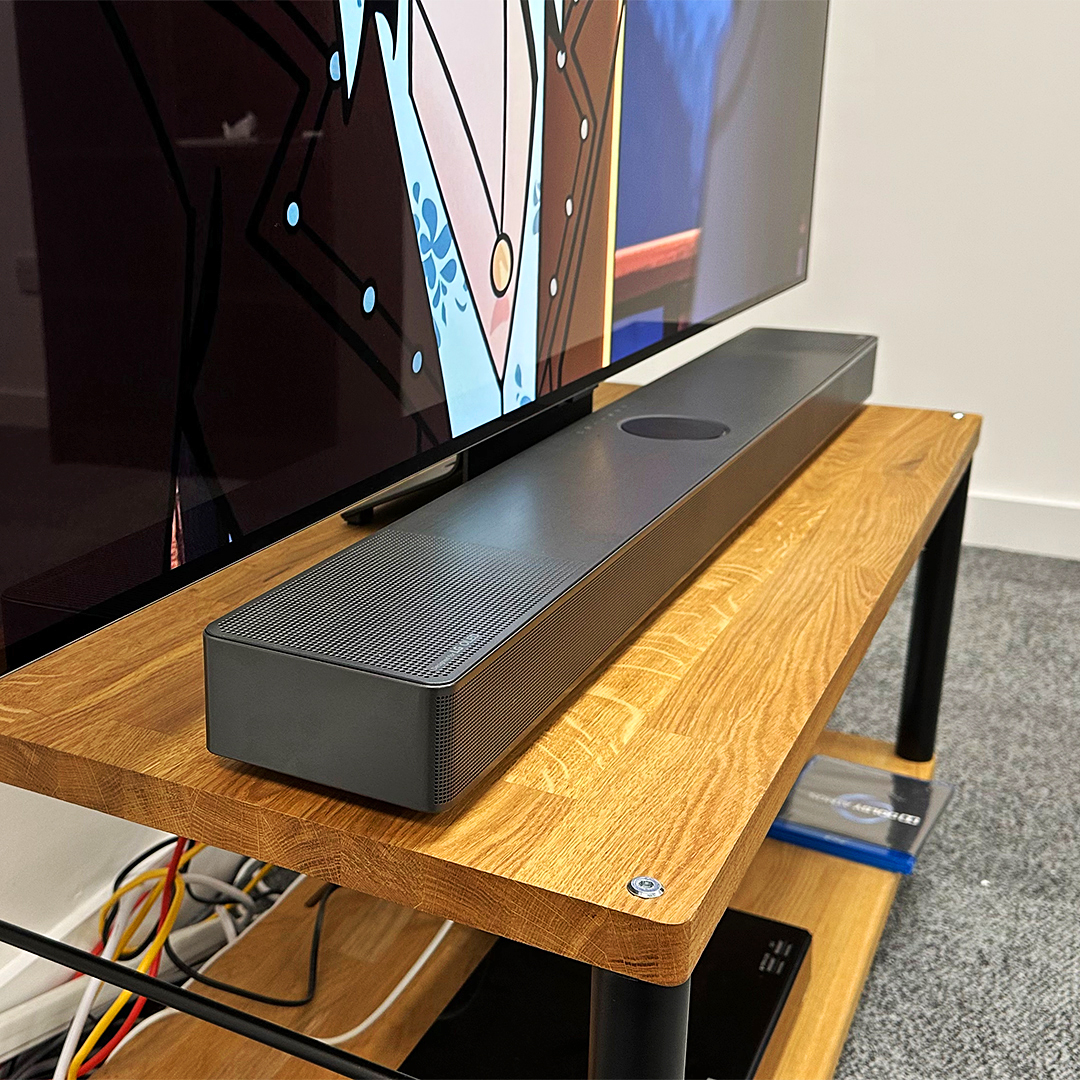
This review is concerned with the base package consisting of the soundbar and subwoofer, which comes in a huge box, a large portion of which contains (along with quite a lot of air) the elements required to mount the ’bar to a C-series TV. It’s worth noting that only C2 and C3 models between 55 and 77 inches are compatible, but if you have one of those TVs (and there are lots of people who do), this is certainly an aesthetic bonus.
If your C-series TV is free-standing, you remove the original pedestal stand and the SC9S soundbar combines with the metal bits in the box to form a new one. If the TV’s wall-mounted, those metal bits create a bracket that allows the soundbar to be mounted directly below the TV. In both cases, it’s a really neat solution that not only looks very stylish but also specifically places the soundbar so that the sound from the upward-firing drivers isn’t blocked by the TV.
There are three of those up-firing drivers – one fairly well-camouflaged example at each end of the soundbar’s top panel and one smaller but more obvious circular one in the center. LG seems keen to draw your attention to this third speaker, presumably in order to highlight that this is ‘the world’s first Dolby Atmos soundbar with triple up-firing channels’.
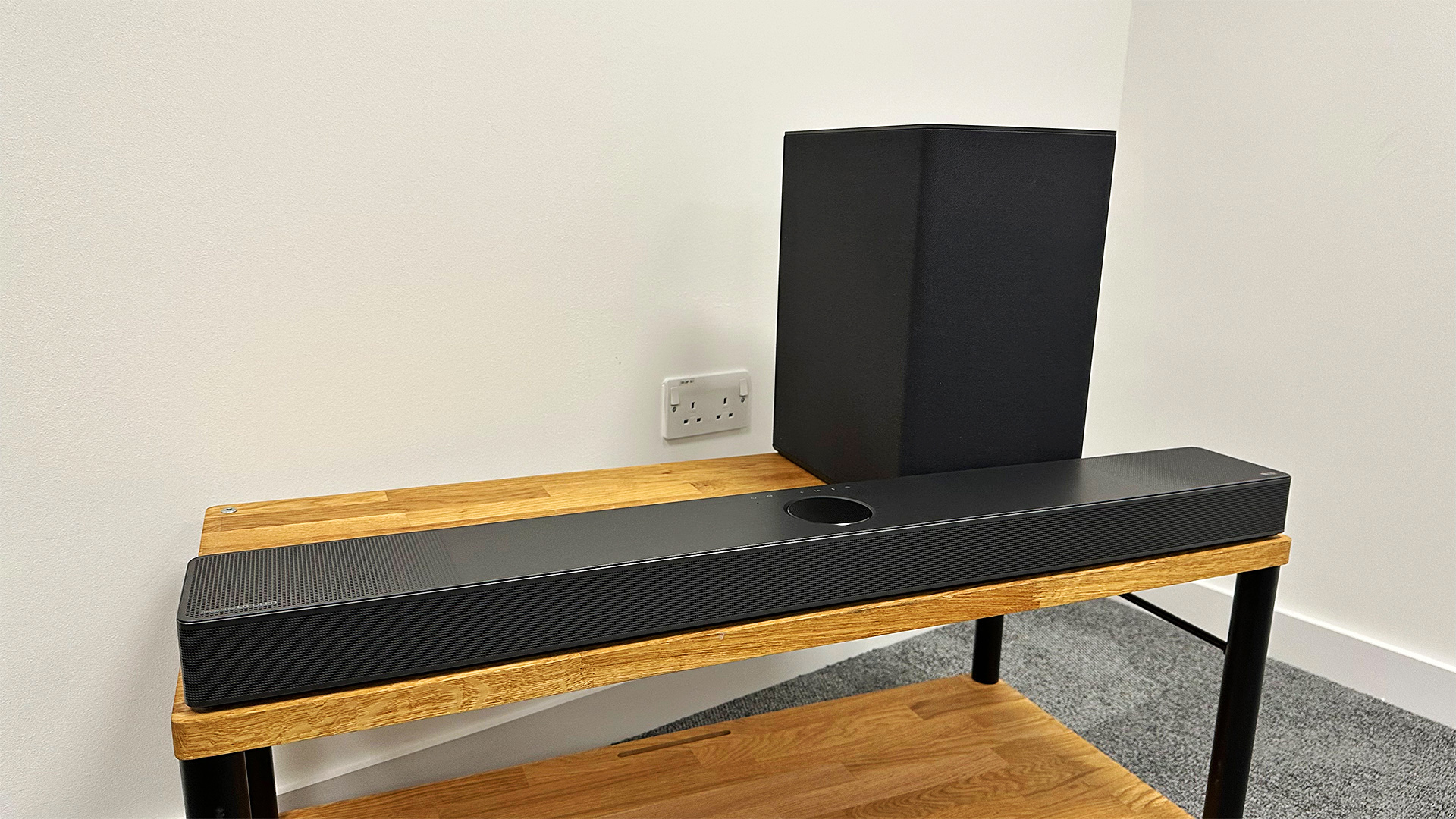
Connectivity HDMI out (eARC), 1 x HDMI in, optical, USB, wi-fi, ethernet, Bluetooth
Sound format support Dolby Atmos, DTS:X, IMAX Enhanced
Streaming Apple AirPlay 2, Chromecast, Spotify Connect, Tidal Connect
Voice control Works with Alexa
Dimensions (hwd) 2.5" x 38.4" x 4.9" (bar), 15.4" x 8.7" x 12.3" (sub)
Weight 9.1lbs (bar), 17.2lbs (sub)
While the soundbar’s quite deep, it’s not very tall, and this means it can be positioned in front of most TVs without obscuring the picture. The front of the bar is all grille, through which three LEDs attempt to do the job that a display should. They do this by changing color and sequence depending on source and feature. The top two light white when using HDMI ARC, for instance, while the top and bottom lights are lit when you switch to the HDMI input. There’s also a green light for Spotify and blue lights for Bluetooth. The need to regularly refer to the manual in order to decipher the pattern the LEDs are creating is mitigated by a slightly annoying but also useful voice that announces each input and feature as you switch.
As well as being sensibly squat, the soundbar is, at 38 inches, also a very sensible width. That makes it less likely than the 45 inches Sonos Arc to hang over the edges of your TV cabinet while also (theoretically, at least) still giving it ample opportunity to spread sound far to the left and right.
There’s not a lot to say about the subwoofer other than it’s a large box that feels fairly solid and that can be placed almost anywhere on account of its wirelessness (though it does need power, of course). However, as is usually the case with subwoofers, performance is best when it’s positioned fairly close to the main ’bar.
Features

As well as the three up-firing drivers, the soundbar features three front-firers, giving the system a 3.1.3-channel arrangement once the subwoofer is factored in. LG claims that the system is rated to 400W, and it can handle every major sound format you could hope for, including the Dolby Atmos and DTS:X flavors of 3D audio, as well as the new IMAX Enhanced format that’s not a big deal now but could become so in the future.
LG says that the SC9S uses an HRTF (Head Related Transfer Function) style 3D engine to generate a virtual middle layer in a feature the company describes as ‘Triple Layer Spatial Sound’, which it says creates a ‘Virtual Sound Dome’.
As with most modern soundbars, the SC9S is designed to receive sound primarily via the HDMI cable with which it’s connected to a TV, using ARC or – if available – higher bit-rate eARC. Unlike some rivals, including the Sonos Arc, the SC9S also has an HDMI input. What’s more, its HDMIs are 2.1-rated and it’s capable of passing through advanced picture signals including 4K/120Hz, VRR and ALLM. Interestingly, while all of these features do work with our Xbox Series X during testing, Dolby Vision gaming is limited to 4K/60Hz, rather than the 4K/120Hz that our C3 OLED is capable of receiving when the Xbox is connected directly. VRR is also restricted to 4K/60Hz.
In terms of music, the SC9S can support hi-res up to 24-bit/96kHz, and there’s support for Spotify Connect, Tidal Connect, AirPlay 2 and Bluetooth 5.0.
As well as the C-series-compatible bracket/stand, the SC9S has two features that work with lots of TVs from LG’s 2022 and 2023 ranges. The first is WOW Orchestra, which works with all OLED and most QNED models launched during that time, and which allows the TV’s speakers to work alongside those of the soundbar (ordinarily, you’d use a soundbar’s speakers and those built into the TV would be deactivated). We’ll get into that in the sound section, below.
The other synergy feature is WOW Interface, which works with all of the models mentioned above, plus models from the NANO, UHD and FHD ranges. This makes a lot of the soundbar’s functions visible through the TV’s interface.
On the subject of controls, the SC9S comes with its own remote for switching inputs and sound modes, though many people will likely put that to one side after initial set-up and simply control volume via their TV’s remote control. There is also an app for the soundbar that, while rather rough and rudimentary compared to something such as the Sonos app, is fairly easy to use.
Sound

Of the USC9S’s various sound modes, there are three that you really need to consider for TV shows and movies: Standard, Cinema and AI Sound Pro. Standard is very restrained indeed. Narrow, soft and unexpressive with all but the most obvious of dynamic shifts, its focus appears to be almost entirely on midrange clarity, which is decent, although voices are rather expressionless and aren’t projected into the room as well as they should be. This mode is fine if all you want is a bit more detail and definition to everyday TV such as soaps and news, but it’s far too gutless and small-scale for movie night.
The AI Sound Pro mode is designed to automatically adjust the sound to the type of content that’s playing but, in testing, it appears to just add a little more oomph and spaciousness to everything we play. You’d have thought that when playing a movie it would automatically switch to something akin to the Cinema mode, but it doesn’t, and we find its movie performance to be rather lacklustre, even though it does stretch effects impressively far to the sides and above the TV.
In the end, we settle on the Cinema mode for movies. It’s got the same sort of spaciousness that AI Sound Pro introduced but with a vast uplift in weight and large-scale dynamic expression. Unlike before, there’s now a fairly steady increase in volume as the planes approach the camera at the start of Unbroken, followed by an enormous, weighty whoosh as they fly by. The previously limp-sounding explosions of flak are now meaty and impactful, too.
But there are still problems. The Cinema mode slightly suppresses fine detail, such as the creaking leather of the pilot’s jacket as he squirms uneasily in his seat, but this is overall a worthwhile trade-off for the extra weight and solidity. The bigger problem is that low-level dynamics are very poor. While bigger shifts in volume are handled reasonably well, subtlety simply doesn’t appear to be in this soundbar’s vocabulary. This is most readily apparent in voices, which are just as expressionless here as with the other modes. There’s almost no intonation to dialogue, which makes it seem as if everyone on screen is a terrible actor.
At the other end of the spectrum, while the subwoofer is capable of adding lots of deep bass it’s not very composed when pushed, so there’s a woolliness to the loudest, deepest frequencies.
So far, we’ve focused on the performance you would get if you used the USC9S with any TV, but we also test the WOW Orchestra feature with our 65-inch C3 review sample. We’ve experienced features such as this from other brands before, and have broadly found that while they can offer some benefits, there’s often an audible tonal disparity between the speakers of the soundbar and those of the TV. That’s not the case here, and the USC9S is undeniably better when used in this way. The most notable upgrade is to projection, with voices sounding more direct, but spaciousness is increased, too, as is the precision with which effects are placed in the broad soundstage.
In the grand scheme of things, the presentation still lacks low-level dynamic subtlety, fine detail and clarity, but on this evidence (we can’t speak for the performance with other LG TVs), WOW Orchestra is the USC9S at its best.
Switching to music – an important part of a speaker system designed to go in a living room and an excellent method of testing overall sound quality – exposes a tonal disconnect between the soundbar and sub. The ’bar itself appears to be quite weedy while the sub is only interested in the deepest frequencies. This manifests in quite a large gap between midrange and bass that robs many singers’ voices of their warmth and means a lot of upper bass is missing while deeper bass is contrastingly overbearing. It’s all just a bit uneven and, as expected after our movie testing, the subwoofer lacks the agility and tonality for a lot of music. You might think it best to disable the soundbar entirely for music, and that is indeed an option, but the soundbar alone is too lightweight.
At the top end, meanwhile, the treble is rather lacking definition and sparkle, though it does at least steer well clear of harshness.
Verdict
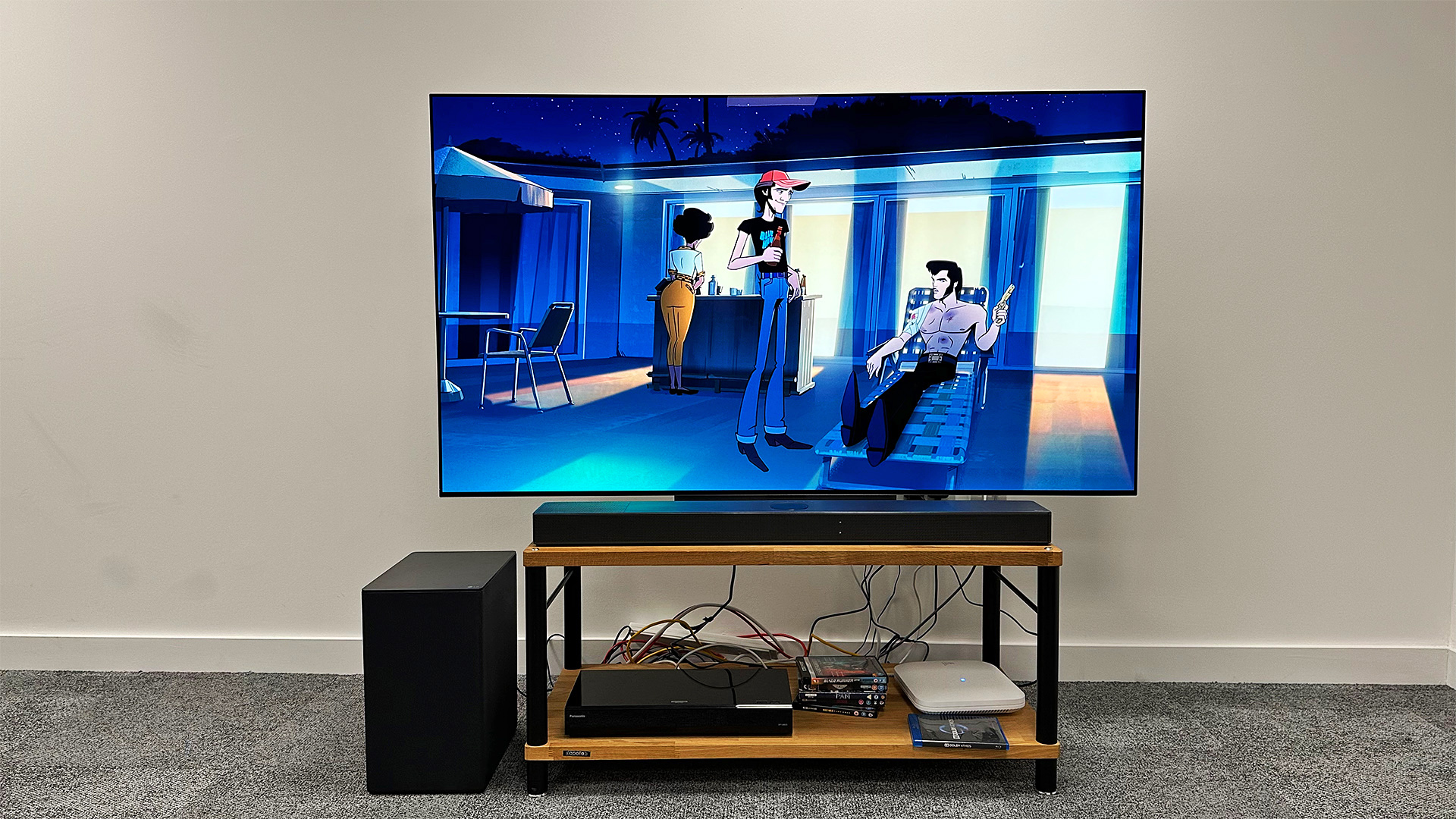
LG should be applauded for achieving a degree of synergy between its TVs and soundbar that many brands have strived for but none have delivered terribly effectively. Unfortunately, though, the soundbar in question isn’t very capable. Yes, it will deliver big explosions and a large soundstage, but it lacks the sort of subtlety required to deliver emotional engagement, and you might be surprised at how unexciting that can make a movie seem even with all the bombast.
The Sonos Arc is a good league above it, with greater clarity, fine detail and dynamic expression in particular. It obviously lacks the weight and depth that you get from the LG’s subwoofer, but in every other way, it’s barely a competition.
SCORES
- Sound 3
- Features 5
- Build 4
MORE:
Read our review of the Sonos Arc
Also consider the Sony HT-A7000
Read our Sennheiser Ambeo Soundbar Plus review
Best soundbars: top options for every budget, tried and tested







